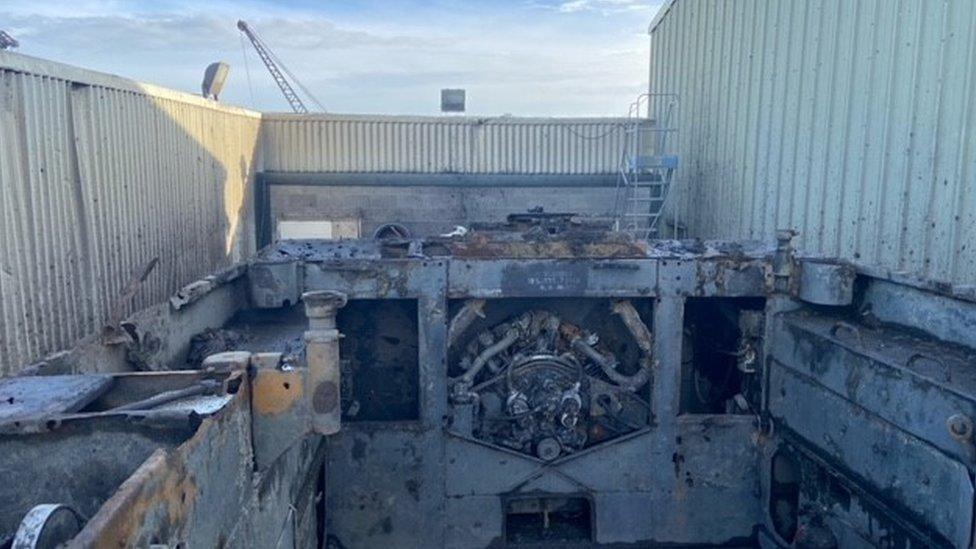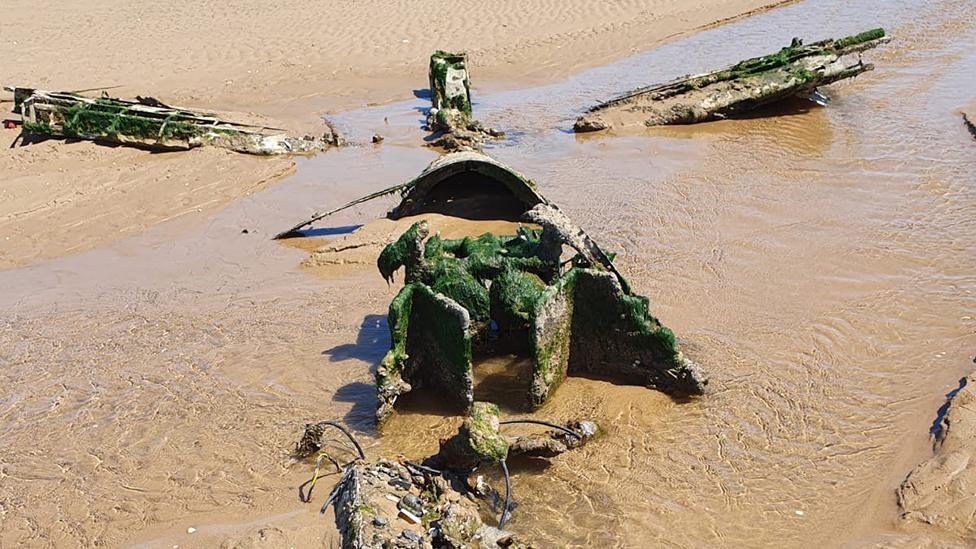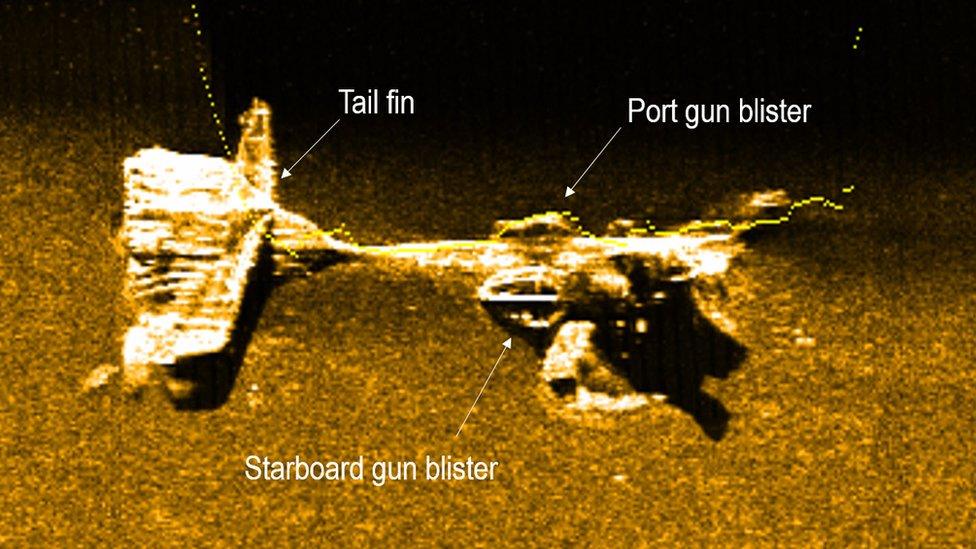Crowland WWII Buffalo LVT: Restoration work begins
- Published

A fundraising appeal has been launched as part of efforts to restore the craft and put it on display
Work is under way to restore a World War Two landing craft unearthed after being buried 30ft (9m) underground for the past 74 years.
The Buffalo LVT was brought in to provide flood defences around Crowland, in Lincolnshire, in 1947, but was swept away and sank into a hole.
It was recovered last month by a team of volunteers.
Daniel Abbott, chairman of the Crowland Buffalo LVT group, said the aim was to restore it and put it on display.

Mr Abbott pictured with the vehicle, which is currently being cleaned by volunteers
Mr Abbott said the craft was in "fantastic" condition despite its subterranean stay, but required a fair bit of work to remove the mud from it.
"Everything worked apart from the engine," he said.

Volunteers have removed mud from the inside of the vehicle by hand
Mr Abbott also said they were having to clean the landing craft by hand as attempts to use a pressure washer had very little impact.
"It's all hammer and chisel," he added.

Once fully cleaned, a protective coating will be applied to help preserve the Buffalo
The amphibious vehicle was one of 16 deployed to the town in March 1947 after floods caused the nearby River Welland to burst its banks.
They were used to form a temporary flood defence, but as the flood waters were pumped back, five of the 26ft-long (8m)machines floated away.
Mr Abbott said they were also planning to recover one of the others at a future date.
"We are probably going to go for next year or the year after, [but] are trying to concentrate on getting this one sorted out first, and hopefully get a museum for it," he added.


The Buffalo LVT (Landing Vehicle Tracked) was a lightly-armoured amphibious landing craft
It was a relatively quick and effective way to transport troops, small vehicles and supplies, but was easily damaged
It played a significant role during the crossing of the Rhine and Elbe rivers in 1945, when bridges were not immediately available
Source: Imperial War Museum

Follow BBC East Yorkshire and Lincolnshire on Facebook, external, Twitter, external, and Instagram, external. Send your story ideas to yorkslincs.news@bbc.co.uk, external.
- Published30 April 2021

- Published29 May 2020

- Published4 July 2019

- Published22 July 2020
